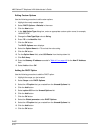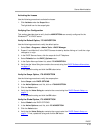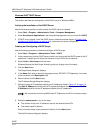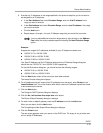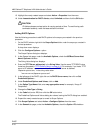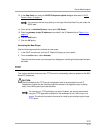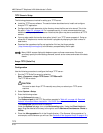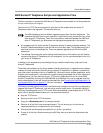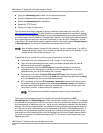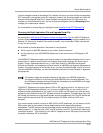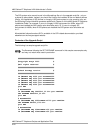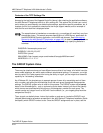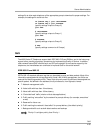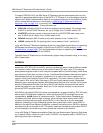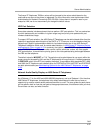
4600 Series IP Telephone LAN Administrator’s Guide
4600 Series IP Telephone Scripts and Application Files
4-20
■ Copy your 46xxsettings.txt file back into the download directory.
■ Check the Readme files for release-specific information.
■ Modify the 46xxsettings.txt file as desired.
■ Restart the TFTP Server.
■ Reset your Avaya IP Telephones.
You can download a default upgrade script file, sometimes called merely the “script file,” from
http://www.avaya.com/support
. This file is sufficient to allow the telephone to use default settings
for customer-definable options, although of course these settings can also be changed with DHCP
or in some cases, from the telephone’s dialpad itself. However, you might want to open the default
file and administer the options to add useful functionality to your Avaya IP Telephones. This file
must reside in the same directory as the upgrade script file, and must be called 46xxsettings.scr
or 46xxsettings.txt. The Avaya IP Telephones can operate without this file.
The settings file may include any of the five types of statements, one per line:
■ Comments, which are statements with a “#” character in the first column.
■ Tags, which are comments that have exactly one space character after the initial #,
followed by a text string with no spaces.
■ Goto commands, of the form GOTO tag, which cause the telephone to continue
interpretation of the settings file at the next line after a # tag statement. If no such
statement exists, the rest of the settings file is ignored.
■ Conditionals, of the form IF $name SEQ string GOTO tag, which cause the GOTO
command to be processed if the value of name is a case-insensitive equivalent to string.
If no such name exists, the entire conditional is ignored.
■ SET commands, of the form SET parameter_name value, where invalid values cause
the specified value to be ignored for the associated parameter_name (so the default or
previously administered value is retained). All values should be text strings, even if the
value itself is numeric, a dotted decimal IP address, etc.
The Avaya-provided upgrade script file includes lines that tell the telephone to GET
46xxsettings.scr and 46xxsettings.txt. These lines cause the telephone to use TFTP to attempt
to download the file specified in the GET command. If the file is successfully obtained, its contents
are interpreted as an additional script file - that is how your settings are changed from the default
settings. If the file cannot be obtained, the telephone continues processing the upgrade script file
(so if you do not have a 46xxsettings.scr file, the telephone will look for a 46xxsettings.txt file). If
the settings file is successfully obtained but does not include any setting changes (which is the
case when you initially download the script file template from the Avaya Support website, before
you make any changes), the telephone stops using TFTP (and hence, does not go back to the
upgrade script file).
Most Windows systems interpret the file extension *.scr as a screen saver. The 4600 IP
Telephones originally used *.scr to indicate a script file, but starting with Release 1.7, the
settings file can also have the extension *.txt.
All data should be enclosed in quotation marks for proper interpretation.



